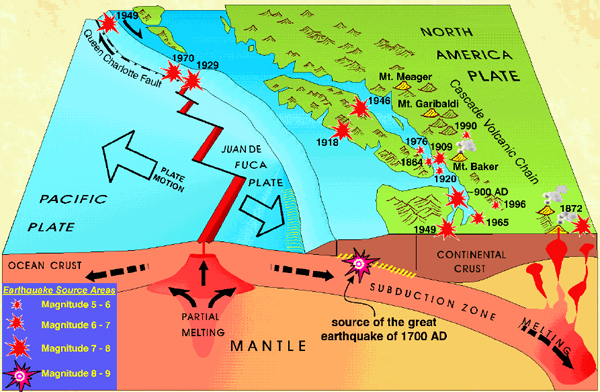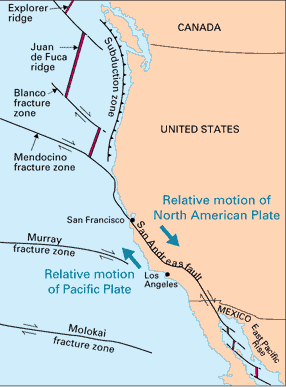 |
|
|
| |
| study guide
| Last Updated • May 22, 2013 | |
Here is a first list of questions from the actual article:
- What new technique was used that made scientists Forsyth and Wang to think that maybe a fragment of the long-gone Farallon Plate could be located underneath the Sierra Nevada Mountains and Baja California?
- On what kind of property is this technique based? Were these properties used in the past for similar purposes?
- Why is the lava above the Baja California anomaly unusual?
- Why would oceanic crust have more magnesium than continental crust?
- The San Andreas Fault is a right-lateral transform strike-slip fault that separates the Pacific Plate to the west from the North American Plate to the east. Forsyth and Wang maintain that in the section of the fault close to the Isabella anomaly, the San Andreas Fault is creeping (that is, the Fault slips gradually rather than sticking and rupturing). This behavior might be influenced by the presence of water from below.
- How does the water facilitate creeping?
- Where does the water come from?
- Would creeping increase or decrease the possibility of a violent earthquake?
- Why would the Isabella anomaly possibly limit volcanism in Central California?
- Is everybody agreeing with this interpretation of the Isabella and Baja California anomalies? Yes or no, explain why
And here is a list of general questions that relate to the materials we have discussed throughout the whole semester:

from: Natural Resources Canada (www.nrcan.gc.ca)
- Describe the type of plate boundary that exists between the Pacific Plate and the North American Plate from the Salton Sea area north to Cape Mendocino in California
- The Juan de Fuca Plate is a segment of the Farallon Plate that has not gone into subduction underneath the North American Plate yet. Describe the type of plate boundary that exists between:
- the Juan de Fuca Plate and the North American Plate
- the Juan de Fuca Plate and the Pacific Plate
- What kind of plate boundary is found in the Gulf of California, or Sea of Cortez, in Mexico, at the southern end of the San Andreas Fault?
- Why is the area of the Colorado Plateau being uplifted?
- Why is the area between the Sierra Nevada Mountains in California and the Wasatch Front in Utah, covering most of Nevada, called “Basin and Range”? What kind of tectonic behavior (compression, extension, shear) is at work there?

from: United States Geological Survey (www.usgs.gov)
Back to the Top | Back to the Images and Notes Page | Back to the Home Page
© Alessandro Grippo, 1994-2013
Los Angeles, California
|
|


